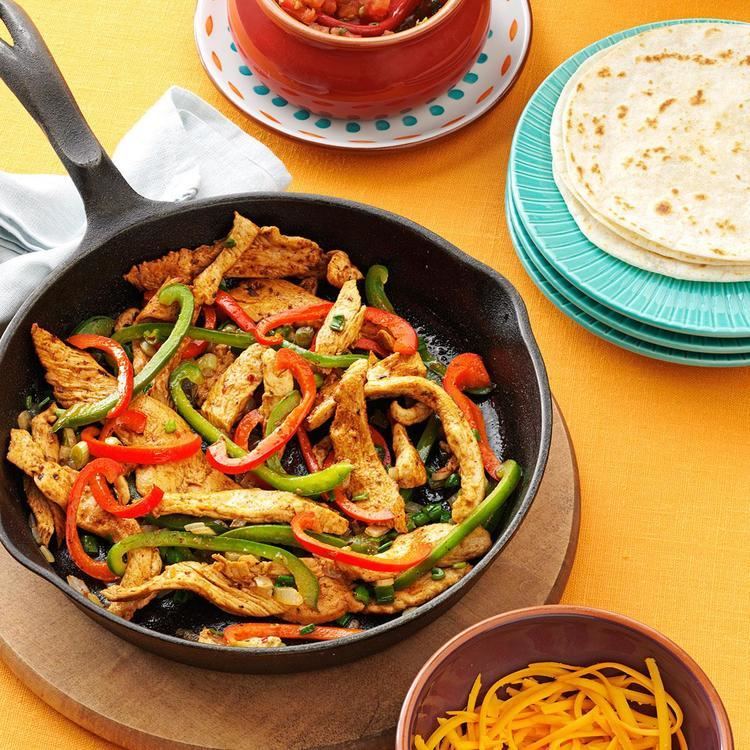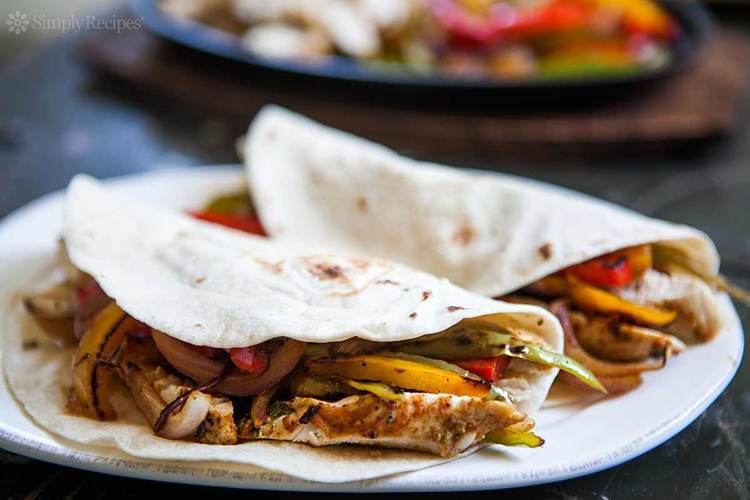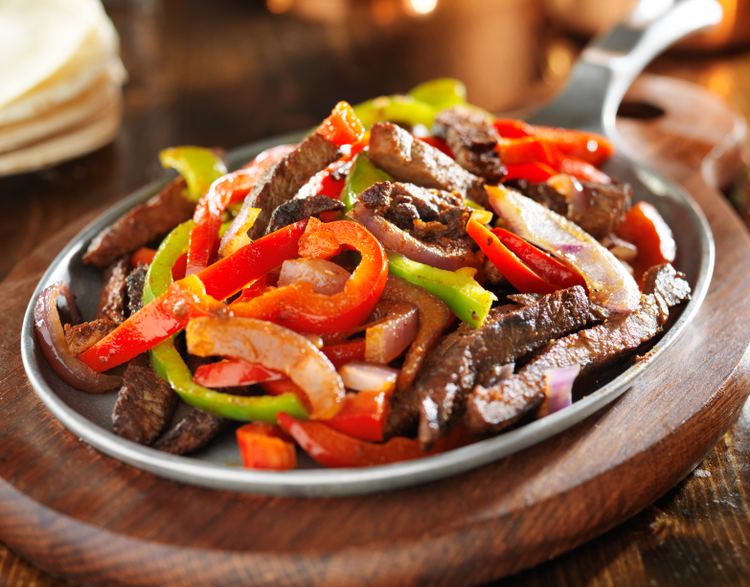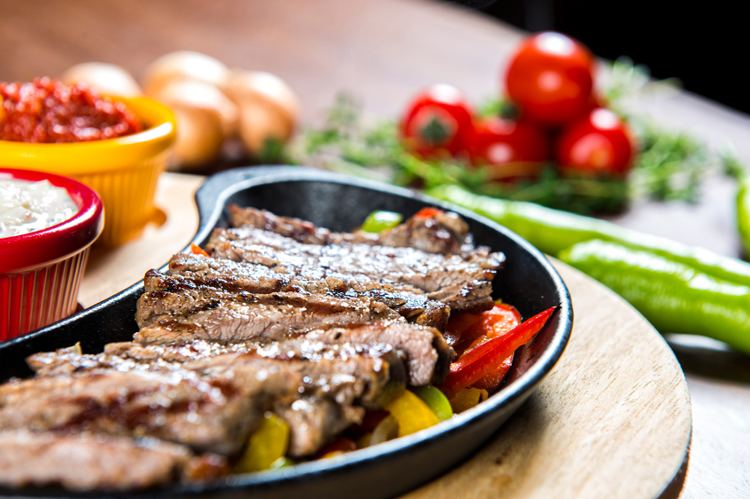Food energy(per serving) 500 kcal (2093 kJ) | ||
 | ||
Region or state Northeastern Mexico, Southwestern United States Similar | ||
Best chicken fajita recipe simple homemade
A fajita (/fəˈhiːtə/; [faˈxita]) is a term found in Tex-Mex cuisine, commonly referring to any grilled meat usually served as a taco on a flour or corn tortilla. The term originally referred to the cut of beef used in the dish which is known as skirt steak. Popular meats today also include chicken, pork, shrimp, lamb and all cuts of beef, as well as vegetables instead of meat. In restaurants, the meat is usually cooked with onions and bell peppers. Popular condiments are shredded lettuce, sour cream, guacamole, salsa, pico de gallo, cheese, and tomato. The northern Mexican variant of the dish name is Arrachera.
Contents
- Best chicken fajita recipe simple homemade
- Chicken fajita made at home how to make chicken fajita recipe
- History
- Popularity
- References

Chicken fajita made at home how to make chicken fajita recipe
History

Fajita is a Tex-Mex, Texan-Mexican American or Tejano, diminutive term for little strips of meat cut from the beef skirt, the most common cut used to make fajitas. The word fajita is not known to have appeared in print until 1971, according to the Oxford English Dictionary. (The word faja is Spanish for "strip", or "belt", from the Latin fascia, "band") Although fajita originally referred to these strips of beef skirt, fajitas now are made with a variety of fillings.
Popularity

The first culinary evidence of the fajitas with the cut of meat, the cooking style (directly on a campfire or on a grill), and the Spanish nickname goes back as far as the 1930s in the ranch lands of South and West Texas. During cattle roundups, cows were butchered regularly to feed the hands. Throwaway items such as the hide, the head, the entrails, and meat trimmings such as the skirt were given to the Mexican cowboys called vaqueros as part of their pay. Hearty border dishes like barbacoa de cabeza (head barbecue), menudo (tripe stew), and fajitas or arracheras (grilled skirt steak) have their roots in this practice. Considering the limited number of skirts per carcass and the fact the meat wasn't available commercially, the fajita tradition remained regional and relatively obscure for many years, probably only familiar to vaqueros, butchers, and their families.[2]

The food was popularized by various businesses such as Ninfa's in Houston, the Hyatt Regency in Austin, and numerous restaurants in San Antonio. In southern Arizona, the term was unknown except as a cut of meat until the 1990s, when Mexican fast food restaurants started using the word in their marketing. In recent years, fajitas have become popular at American casual dining restaurants as well as in home cooking.
In many restaurants, the fajita meat is brought to the table sizzling loudly on a metal platter or skillet, with the tortillas and condiments.
